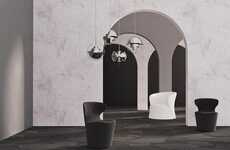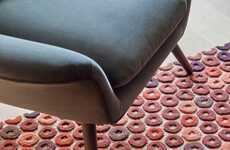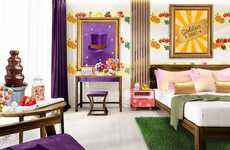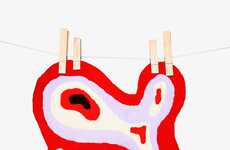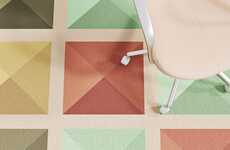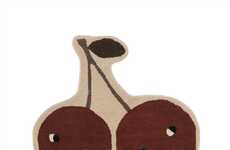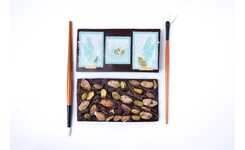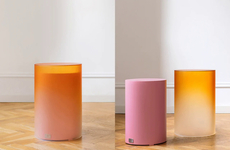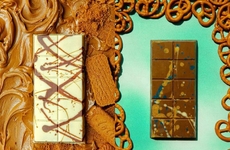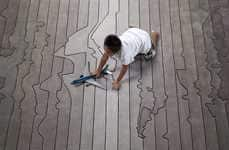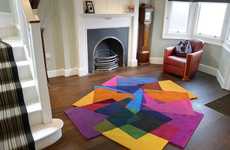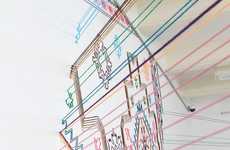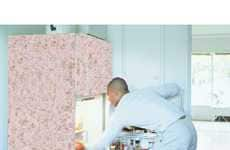
The Candybar Carpet Reproduces Textile Designs in Intricately Arranged Treats
Amelia Roblin — December 12, 2013 — Art & Design
References: wemakecarpets.nl & fubiz.net
Now who would have the heart and the stomach to walk over the Candybar Carpet? I can imagine the five second rule going completely out the window on this one, as many observers of this absolutely scrumptious installation would certainly be overcome by a sugar and cocoa craving -- floor or no floor.
The WE MAKE CARPETS team began with a collection of hundreds of chocolate bars of all different brands, working to organize them into elaborate patterns to create depth and texture. The central and peripheral motifs that you'll notice in the Candybar Carpet have been derived from familiar textile designs, creating quite a convincing floor covering display. Set up within a factory in Veghel, Netherlands, this a delicious creation that's intended to delight one sense, to the misfortune of another.
The WE MAKE CARPETS team began with a collection of hundreds of chocolate bars of all different brands, working to organize them into elaborate patterns to create depth and texture. The central and peripheral motifs that you'll notice in the Candybar Carpet have been derived from familiar textile designs, creating quite a convincing floor covering display. Set up within a factory in Veghel, Netherlands, this a delicious creation that's intended to delight one sense, to the misfortune of another.
Trend Themes
1. Edible Design - Exploring the use of edible materials in art and design opens up new opportunities for sensory experiences and unconventional displays.
2. Cross-industry Collaboration - Collaborations between artists, designers, and food professionals can lead to innovative creations that blur the boundaries of traditional industries.
3. Alternative Material Application - Experimenting with non-traditional materials like chocolate in unexpected contexts can spark disruptive ideas for product design and manufacturing.
Industry Implications
1. Art and Design - The incorporation of edible materials in artistic installations and designs offers new avenues for creativity and sensory engagement.
2. Food and Beverage - Collaborating with artists and designers to create edible art pieces can provide unique experiences and storytelling opportunities for the food industry.
3. Manufacturing and Textiles - Exploring alternative materials like chocolate in the manufacturing and textile industry may lead to disruptive innovations in product design and craftsmanship.
1.4
Score
Popularity
Activity
Freshness

